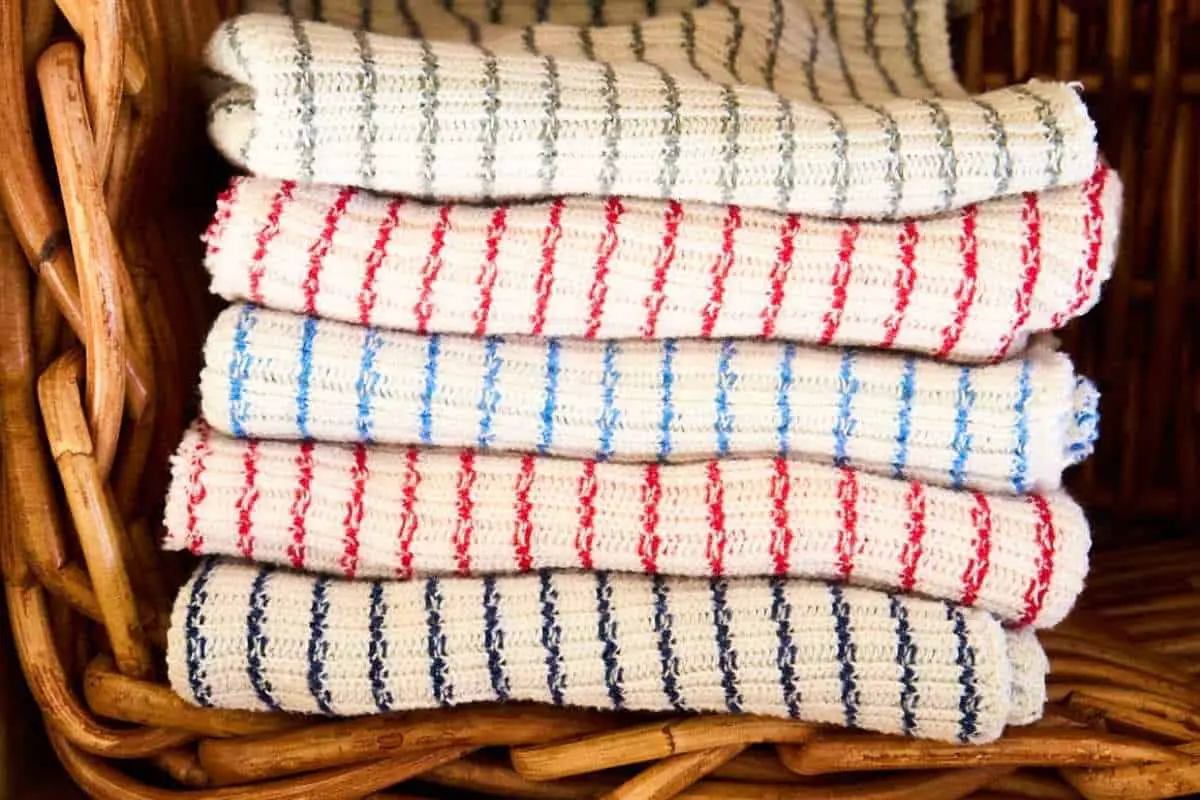If the recent downturn has left your purse strings tight, you’re not alone. Across the globe, families have to get a little more creative with their spending habits. And in the center of it all are the resourceful moms, helping their families navigate these choppy financial waters.
In this guide, we’ll be arming you with all the tips, tricks, and strategies you need. We’re talking budgeting hacks, nutritious yet affordable meals, creative DIY projects, and even ways to squeeze some extra fun out of those lean times.

So, dear homemaker, let’s roll up our sleeves and explore how you, with your unique blend of love, resourcefulness, and resilience, can make this recession work for your family.
This isn’t just about getting by, it’s about thriving, and you’re just the person for the job. This is your moment to shine brighter than ever, demonstrating your skills in money management, household efficiency, and of course, emotional support. Because after all, the heart of a thriving family, especially during a recession, beats in the home.
The Basics: Family Budgeting During Economic Downturn

time to take a long hard look at money in and money out
Learning the Art of Budgeting: Where to Begin?
Know Your Income and Expenses Start by clearly identifying your total income and every single one of your expenses. Yes, it includes those morning coffees on the go and those quick snack grabs from the convenience store. Understand where your money is coming from and where it’s going to get a full picture.
Prioritize Your Spending When the purse strings are tightened, we need to make sure we’re covering our essential needs first. This includes housing, food, healthcare, and utilities. Non-essential expenses, like subscriptions, dining out, and luxury purchases, should be the first to take a cut.
Negotiate Your Bills You’d be surprised how many of your bills could be lowered with a simple phone call. From internet service providers to insurance companies, it doesn’t hurt to ask if there are any discounts or more affordable plans available.
Track Your Spending Knowing where your money is going is half the battle. There are plenty of free apps that can help you track your spending habits and visualize where your money is going. This can help you identify any leaks in your budget.
Here are some things you can usually find cheaper alternatives for or just cuT
- Cut your cable service and get one affordable streaming service or use what’s free (PLENTY!)
- Subscription boxes of all kinds
- Expensive food items (coffee syrups, specialty snacks, protein bars)
- Take out or purchased coffee
- Meal delivery kits
It doesn’t really matter how you budget. What’s important is that you do it. No more crossing your fingers and hoping everything works out at the end of the month.
Budgeting is personal and there a lot of ways to do it. For my personal favorite, read this: The Zero-Based Budgeting Method.
Food That Doesn’t Break the Bank
It all starts with meal planning
Nothing saves you more money than meal planning. Nothing. Here’s why:
Reducing Impulse Purchases When you head to the grocery store without a plan, you’re more likely to fill your cart with random items that catch your eye (hello, fancy gourmet chips!). Meal planning allows you to make a focused list, so you can walk past those impulse buys without a second glance.
Preventing Food Waste When you plan your meals, you buy exactly what you need, no more, no less. This means fewer wilted veggies in the crisper drawer and less food thrown away. It’s good for your wallet and the planet!
Maximizing Use of Ingredients Meal planning allows you to strategize your ingredient usage. Got a big bag of potatoes? Plan a few different meals that use them. This way, you’re getting the most bang for your buck.
Taking Advantage of Sales and Bulk Buys If you see a sale on a staple item, you can plan your meals around it to take full advantage of the discount. Bulk buying is another money saver, but only if you have a plan to use all of it before it spoils.
Avoiding Takeout Temptations We’ve all had those nights where we just don’t know what to cook, so we order takeout instead. With a meal plan, you always know what’s for dinner, making it easier to resist the siren call of delivery.
Cook Once, Eat Twice (or More!) Planning for leftovers means you’re cooking less, which saves time and money. Make a big batch of chili, then enjoy it again for lunch the next day, or freeze it for a super easy meal down the road.
Meal planning might seem like a bit of work up front, but the savings you’ll see (and the stress you’ll avoid) make it totally worth it.
❤️ Read more: Making a Master Monthly Meal Plan ❤️
Saving money on your groceries

your grocery budget is easy to reduce
Stick to Your List That grocery list isn’t just a suggestion, it’s your game plan. Stay focused, stick to the list, and resist those flashy end-cap displays and impulse buys at the checkout line.
Shop Seasonal Produce Not only does it taste better, but seasonal produce is often cheaper too. Plus, it’s a great way to add variety to your meals throughout the year.
Bulk is Better (Sometimes) Buying in bulk can save you money, but only if you’ll use it all before it goes bad. Grains, beans, and frozen veggies are great bulk buys. A gallon of guacamole, not so much.
Store Brands for the Win Often, the only difference between a store brand and a name brand is the price (and maybe the packaging). Give store brands a try and watch your savings stack up.
Coupons and Sales Take a few minutes to scan the weekly sales ad or clip some coupons before you shop. There are also plenty of apps that offer digital coupons and cash back on grocery purchases.
Don’t Shop Hungry Everything looks good when you’re hungry, which can lead to unnecessary and often unhealthy purchases. Have a snack before you shop.
Plan Around Protein Protein is usually the most expensive part of the meal. Look for sales on meat and other proteins, then plan your meals around what’s on sale.
Buy Frozen Frozen fruits and veggies are just as nutritious as fresh, often cheaper, and won’t spoil before you can use them.
Remember, every little bit of savings adds up! Even if you only save a few dollars each trip, over a year that can add up to some serious cash.
❤️ Read more: Money Saving Grocery Hacks ❤️
DIY: Savings in Action at Home and with Kids
It’s a real, practical way to save money and add some fun into your home life. From making your own cleaning supplies to home decor, DIY can be a real game-changer for your budget.
Let’s explore some DIY projects that not only will save you some pretty pennies but also might become your new favorite hobbies:
Homemade Cleaning Products Say goodbye to expensive, chemical-filled cleaners! With a few simple ingredients like vinegar, baking soda, and essential oils, you can make your own all-purpose cleaners, window sprays, and even laundry detergent.
Cooking from Scratch Prepackaged foods might be convenient, but they can really eat into your budget. Try your hand at making homemade bread, pasta sauce, or salad dressings. You’d be surprised how much you can save (and how much better it tastes)!
Gardening Why buy expensive herbs or veggies when you can grow your own? Even if you don’t have a yard, many plants can be grown in pots on a windowsill or balcony. It’s therapeutic, good for the environment, and friendly on the wallet!
Sewing and Mending Instead of tossing out clothes with minor tears or missing buttons, repair them. If you’re feeling adventurous, you can even try making simple clothes, like skirts or kids’ clothes. This can save a ton on clothing costs over time.
DIY Decor Home decor doesn’t have to be expensive. DIY projects like painted vases, handmade wreaths, or upcycled furniture can add a personal touch to your home without breaking the bank.
At-Home Fixes and Maintenance to Save Big Bucks

painting is a lot of work but saves a ton
Maybe it’s learning to patch drywall, fix a leaky faucet, or even painting a room yourself instead of hiring a pro. YouTube is a gold mine of tutorials for almost any home repair you can think of. Plus, there’s something super satisfying about fixing things around the house with your own two hands.
There’s a lot you can do yourself around the house that can save you serious money:
Basic Plumbing Knowing how to unclog a sink or toilet, fix a leaky faucet, or even install a new shower head can save you the cost of a plumber’s visit.
Home Weatherproofing Sealing windows and doors, insulating your hot water heater, and installing weatherstripping can all save you big bucks on your energy bill.
Painting Hiring a professional to paint a room can be costly. With a little patience and some YouTube tutorials, you can do it yourself for the cost of the paint and supplies.
Drywall Repair Minor holes and dings in the wall can be easily fixed with some spackle and paint. No need to call in a pro for small jobs like this.
Simple Appliance Repairs Often, issues with appliances like your fridge or washing machine can be fixed with a little troubleshooting. Always check the manual and do a quick internet search before calling a repair service.
Regular Maintenance Things like changing the filters in your HVAC system, cleaning your dryer vent, and draining your water heater can prevent bigger, more expensive problems down the line.
Building Family Resilience: Fostering Strength and Adaptability in Recessions
Hard times like recessions aren’t just about tightened budgets, they’re also a chance to tighten your family bonds and build resilience. You might be thinking, “But how?” Well, it’s all about fostering a mindset of strength and adaptability. This means working together as a family to navigate financial challenges, teaching kids the value of money and the importance of savings, and nurturing a sense of gratitude and contentment even when things are tough. It’s about creative problem-solving, making the best of what we have, and finding joy in simple, meaningful family moments. The great part? This resilience will serve your family not just during a recession, but in all life’s ups and downs.
Understanding the Value of Money When budgets are tight, kids can learn that money doesn’t just appear. It’s earned through hard work and should be spent wisely. This can be a great opportunity to introduce concepts like saving, budgeting, and making thoughtful spending choices.
Appreciating What You Have Financial challenges often make us realize how much we take for granted. It’s a chance to cultivate gratitude for what we have, rather than focusing on what we don’t have or what we want.
Creativity and Resourcefulness When money is scarce, families often need to think creatively and be resourceful. Whether it’s making a meal with what’s in the pantry or finding free entertainment, these experiences can nurture problem-solving skills and flexibility.
Resilience Financial hardships are tough, but they also show us how strong we are. Kids learn that they can bounce back from difficult situations, which is an incredibly valuable life skill.
Empathy and Compassion Experiencing financial difficulties can foster empathy and compassion. Kids may develop a deeper understanding of what it means to struggle and a greater willingness to help others in need.
Remember, it’s not about the challenges we face, but how we respond to them. With a positive approach, financial hardships can provide powerful teaching moments and growth opportunities for the whole family.
Keeping Morale High: Family Bonding Activities on a Budget

reusable items are greener and save money
Family Game Nights Dust off those board games or deck of cards. Nothing sparks laughter and healthy competition like a good old-fashioned family game night. For a twist, have a rotating “game master” who gets to pick the game each week.
Picnic in the Park Pack a simple homemade lunch and head out to your local park. Bring a frisbee or ball for some active fun, or a book for a quiet read under a tree.
DIY Movie Night Who needs the cinema when you have your living room? Choose a family favorite, pop some popcorn, dim the lights, and you’ve got a cozy movie night in.
Cooking Together Choose a recipe, gather the ingredients and get cooking. It could be a treasured family dish or something new and exciting. The kitchen is a great place to bond, and you get a tasty treat out of it too!
Nature Walks or Bike Rides Explore your local area by foot or on two wheels. It’s a great way to get exercise, spend time together, and appreciate the beauty of nature.
DIY Arts and Crafts Get those creative juices flowing with some DIY arts and crafts. Use whatever materials you have at home and see what beautiful creations you can make together.
Home Camping Set up a tent in the living room or backyard. Roast marshmallows over the stove and tell stories. It’s a camping adventure without the expense and headache.
Stretching Every Dollar: Shopping Hacks
Fear not, bargain-hunting homemakers, there are ways to stretch those dollars. We’re talking about shopping hacks—little tricks and tips that can turn a budget-busting shopping trip into a money-saving success story. We’re diving into everything from timing your purchases right to using technology to your advantage, to mastering the art of thrift shopping. Because everyone loves a good deal, and a good deal is even sweeter when you’re working with a tight budget.
Go Digital Many stores have apps that offer digital coupons. Sign up, download, and start saving. You can also find coupon codes online, through websites or email newsletters.
Subscribe and Save Many online retailers offer discounts if you subscribe to regular deliveries of items you buy frequently. Just make sure it’s something you really need regularly.
Buy in Bulk Often, buying in bulk can save money in the long run. This works great for items you use frequently and non-perishables.
Shop Sales and Clearance It’s an oldie but a goodie. Always check the sales and clearance section first. You might find just what you need at a fraction of the price.
Price Comparison Before you hit the ‘buy’ button or head to the checkout, do a quick online search to see if the item is cheaper elsewhere.
Don’t Forget About Thrift Stores Thrift stores and consignment shops can be goldmines for lightly used clothing, furniture, and household items. It’s environmentally friendly and great for your wallet!
Be Organized Keep your coupons organized so you know what you have. A small binder or envelope works great. Make sure to keep an eye on expiry dates too.
Green, Frugal Living

reusable items are greener and save money
There are ways to tackle those pesky utility bills without sacrificing comfort. We’re talking about energy efficiency, the magical art of using less power to do the same tasks. It might sound complicated, but really, it’s about simple changes, like switching to energy-efficient light bulbs, unplugging electronics when not in use, or even doing laundry in cold water. These steps can make a significant difference in how much you pay each month.
Line Dry Your Clothes Give your dryer a break and line dry your clothes. Not only does it save energy, it’s better for your clothes and they’ll smell super fresh!
Run Appliances at Night Many utility companies offer lower rates for electricity used during off-peak hours. Take advantage by running your dishwasher, washer, and dryer at night.
Unplug Devices Even when not in use, your devices draw power if they’re plugged in. So, remember to unplug that phone charger or toaster when you’re not using it.
Switch to Energy-Efficient Light Bulbs LED bulbs use less energy and last longer than traditional bulbs. It’s a win-win!
Insulate Your Home Proper insulation helps keep your home warm in winter and cool in summer, reducing the need for heating and cooling.
Seal Leaks Cracks and gaps in windows and doors can let in cold air in winter and hot air in summer. Seal them up to save on heating and cooling costs.
Maintain Your HVAC Regular maintenance can keep your heating, ventilation, and air conditioning system running efficiently and save you money in the long run.
Install a Programmable Thermostat A programmable thermostat can adjust the temperature when you’re not home or when you’re sleeping, saving energy without sacrificing comfort.
Use Power Strips Plug your electronics into a power strip and switch it off when not in use. This cuts the power completely, saving energy.
Wash Clothes in Cold Water Most of the energy used by washing machines goes to heating water. Switch to cold to save energy and keep your clothes looking vibrant.
Staying Home, and Loving It

keeping a tidy home helps you love it
I completely understand that going out can sometimes feel like an essential escape, especially when the four walls of home seem to be closing in. But hear me out. Staying home can also save some serious dough and with a little creativity, it can be just as fun. Here’s how:
Cooking at Home Eating out regularly can seriously impact your wallet. Cooking at home not only saves money but can also be healthier and a fun family activity.
Free Entertainment Swap movie nights out for at-home movie marathons. There are plenty of streaming platforms with movies and shows that can keep the whole family entertained.
Saving on Gas By staying home, you’re not just saving on entertainment or dining out costs. You’re also cutting down on your gas expenses.
DIY Spa Days Who needs a pricey spa when you can have a relaxing pampering session right at home? Whip up some homemade face masks, put on some calming music and voila, welcome to your very own home spa.
At-Home Fitness You don’t need a gym membership to stay fit. There are plenty of effective workouts you can do at home, from yoga to high-intensity interval training.
Gardening If you have a bit of outdoor space, gardening can be a rewarding and money-saving hobby. Grow your own veggies and herbs for the freshest ingredients right at your doorstep.
DIY Projects Instead of shopping for new items, try to make them at home. You’d be surprised at what you can create with the things you already have.
No Impulse Buys Being home reduces the temptation to make impulse purchases, whether it’s that coffee while you’re out or the enticing sales at stores.
❤️ Read more: How to Love Being at Home ❤️
Going Without (The Hard Part)

the world is full of beautiful things you can’t afford. it’s okay.
And now, for the cold hard truth. The most challenging aspect of saving money isn’t necessarily about swapping out your daily latte for a homemade cup of joe or choosing store brands over name brands. No, the real struggle, the tough bit, is learning to do without the things we really, truly want. It’s about reigning in that impulse to click ‘add to cart’ on the latest tech gadget, or walking past the store window displaying the perfect pair of shoes. It’s a test of patience, prioritizing needs over wants, and mastering the art of delayed gratification. But let’s not forget, while it’s undoubtedly difficult, it’s also incredibly empowering. You’re taking control of your financial future, and that’s a pretty big deal. Plus, I promise you, you might find doing without isn’t as tough as it seems.
I know that as a mom, you want everyone to be happy and it’s hard to see your kids not get everything they want. But do you want to know a secret? Getting everything you want doesn’t make you happy. Not you, not your kids, no one.
Find what really makes you happy and you’ll thrive in a recession and everything else that life throws your way.
You’re not alone in this journey, and I’m here to help every step of the way.

